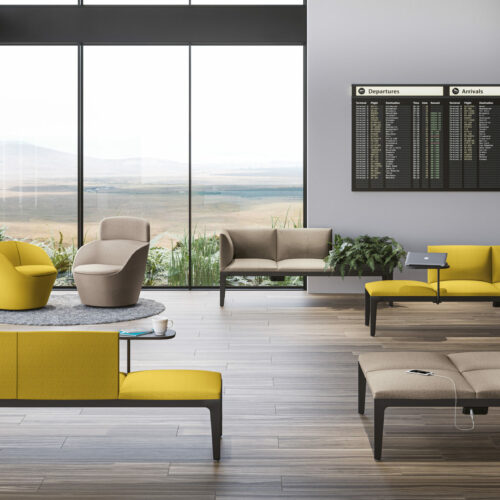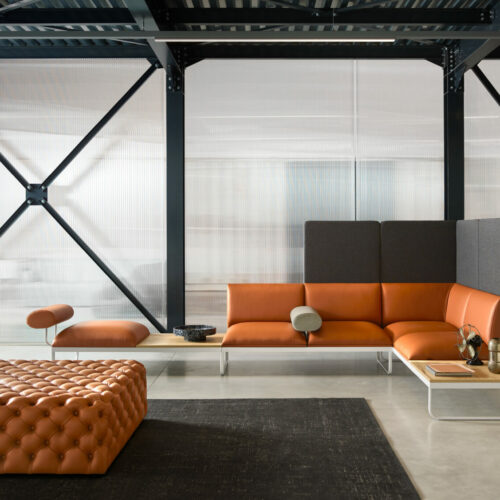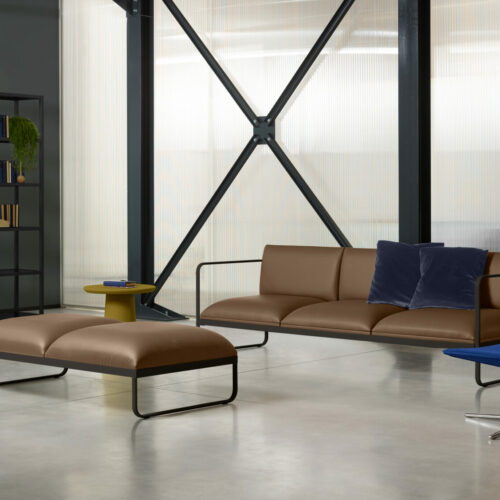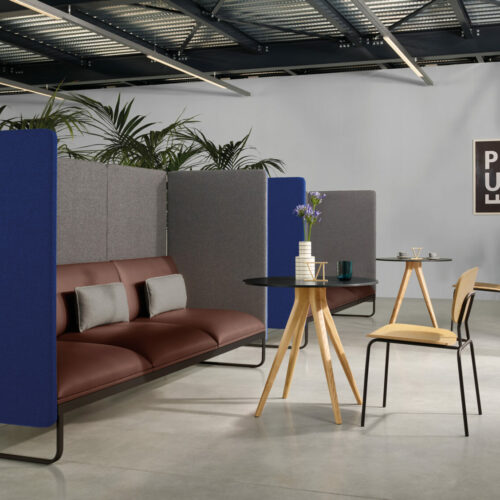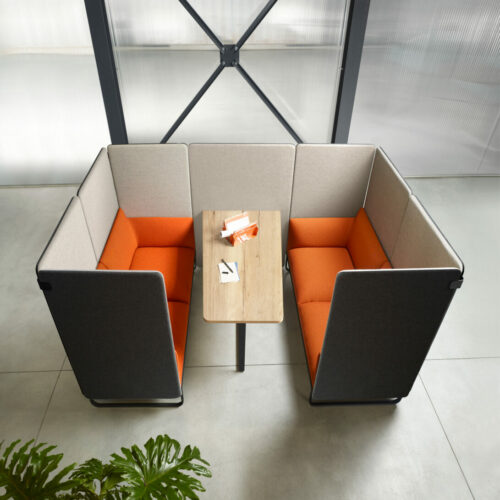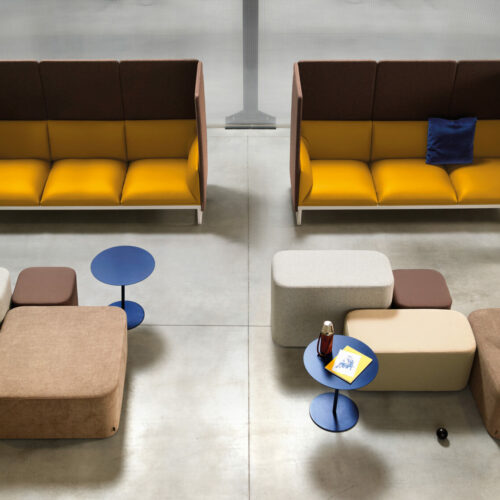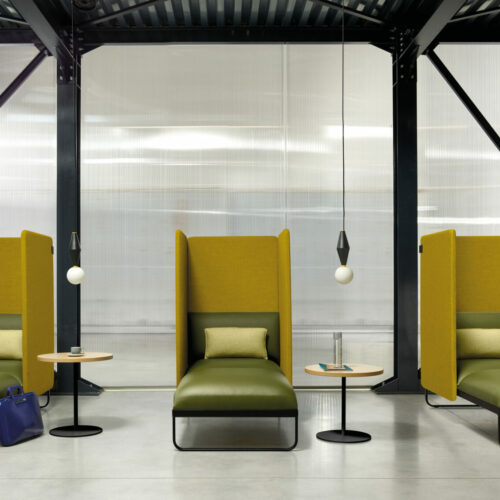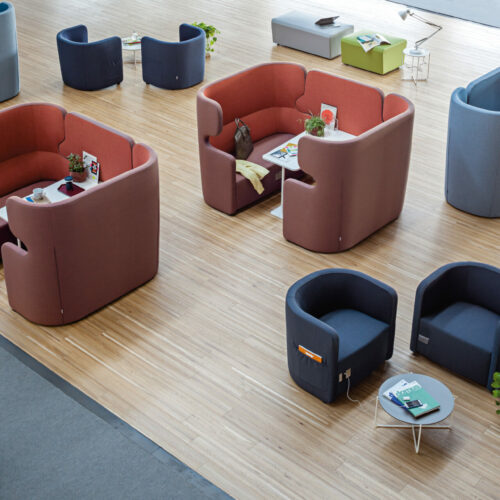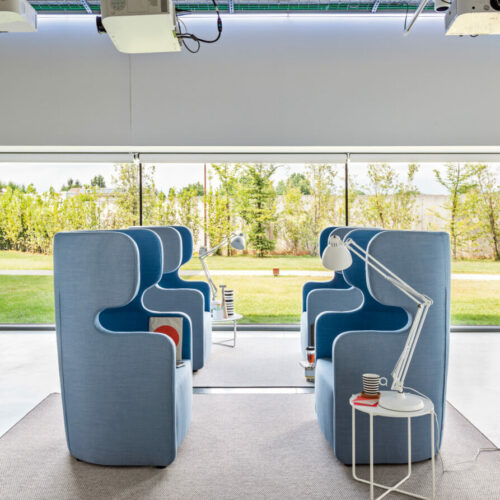Lounge area
relaxation areas
in the office
The importance of relaxation areas
Encourage social interaction
and stimulate creativity
Informal spaces are becoming increasingly important moments in the life of a company.
Time, space and contact take on different forms and find a natural meeting point in environments that are more responsive to new communication needs. Even break time has its own ritual that requires a suitable format that respects the pleasure of hospitality, functionality and the right management of available space.
TA Office&More has selected the best proposals on the market, based on the latest international design trends, with full respect for ergonomics and functionality.
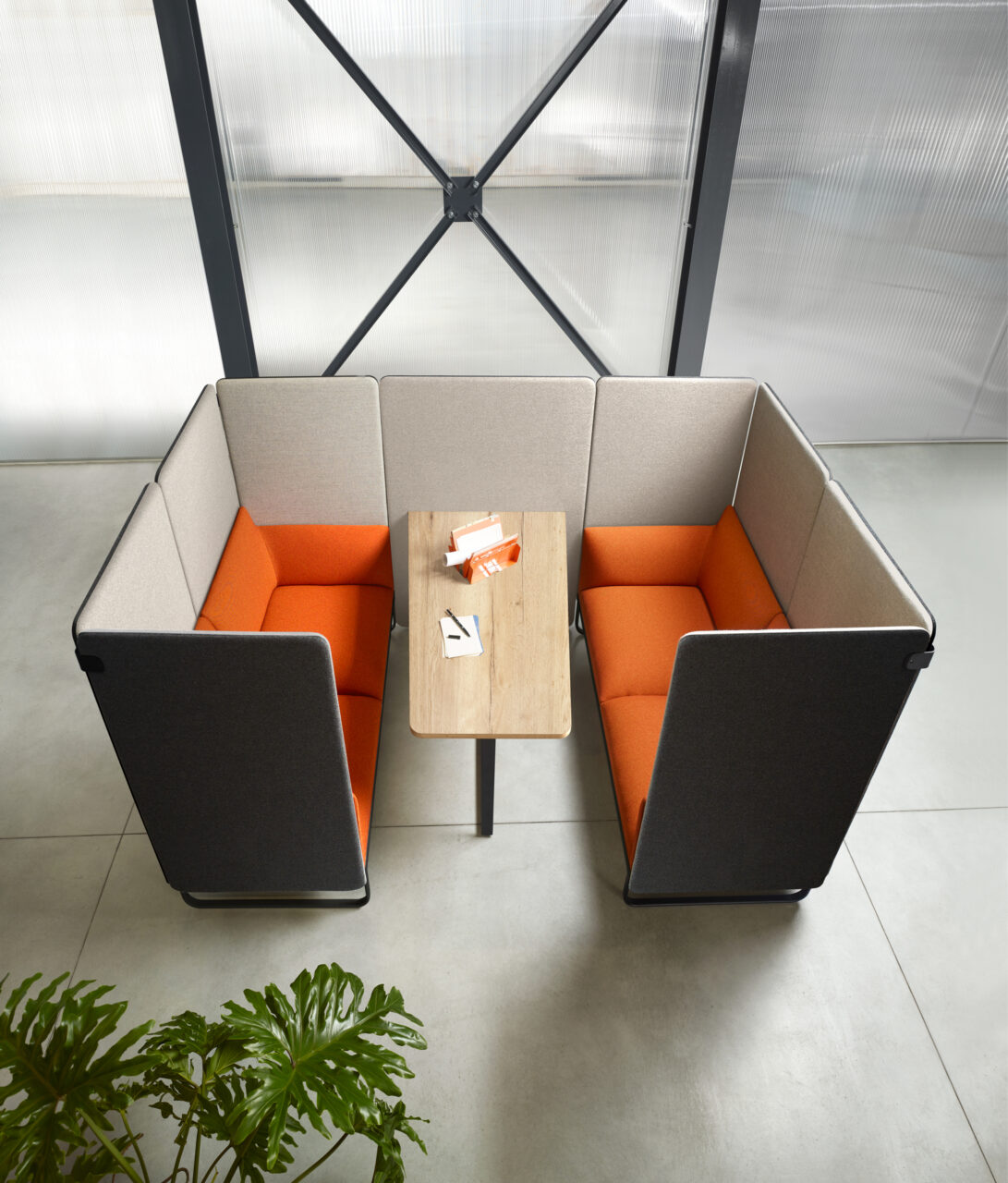
5 advantages of having a lounge space in the office
Encourages social interaction and a sense of community
As human beings, we have a natural desire to form connections with those around us. Creating a space where people can relax from the stresses of the modern office provides a consistent environment in which connections can be made. Colleagues who feel connected to each other also tend to have better teamwork skills. This means that creativity, productivity and other needs within the workplace will increase as these interpersonal relationships increase.
Stimulates creativity
A change of scenery in the office allows workers to disconnect from the stress of their jobs and gain a new perspective on the work at hand. This can be achieved by changing the colour of the wall paint in the room, adding more relaxed furniture or even including games or puzzles in the room. These changes help separate this lounge space from the rest of the office and really create a distinctive space where employees feel like they are escaping stress, without leaving the office.
Maximise productivity
The overall satisfaction of employees has a big influence on their work performance. Small perks like snacks, coffee or other refreshments make workers feel valued, appreciated and help them refocus on the task at hand. This also fuels the idea of maximising teamwork through this type of environment. Many companies rely on teamwork to succeed, and the support of such individuals will help to see upward trends in productivity.
Flexibility
Different groups within the office dynamic are able to enter the space and turn it into what they need at that moment. Including more casual and light seating in this lounge area will make the space easily accessible to any group for any purpose. Many offices were once filled with large, bulky furniture, fixed room styles/arrangements and could not be manipulated for special purposes. The idea here is that this common space could be used by any member of the office or group, making it a truly cohesive space.
Increased attractiveness
Studies show that 93% of tech workers were more likely to stay with a company that created spaces such as lounge rooms or ‘recharge’ rooms for their employees than those that did not. With the modern office promoting remote working, companies that are adopting these additional steps to satisfy their employees have the upper hand.
Why lounge areas are important in modern offices
Our wireless world raises interesting questions about the way people work in modern offices. Laptops, smartphones and tablets offer unprecedented mobility, allowing a growing number of professionals to retreat to their favourite places in the café or at home. Flexibility fuels the idea that work can happen anywhere.
But does 'everywhere' really work?
A recent survey by Turnstone revealed that while 71% of office workers are sometimes remote, 72% of them report facing challenges when away from the office. Whether it’s noisy environments, limited wifi, inability to print documents or difficulty connecting to company servers, these issues threaten to derail productivity and decrease employee engagement.
So, if there are real obstacles when working remotely, why do so many workers still choose their ‘favourite places’ away from the office?
A recent study by Turnstone suggests that it could be because they prefer options that often don’t exist in the workplace. For example, when given the choice, 32% of 18-34 year olds prefer to work in lounge environments over traditional workplaces . However, the same survey found that only 25% of professionals have such spaces. For the lucky few who do have modern lounge areas, almost half say they use them to do real work, not just to socialise or mingle.
So what does this mean for entrepreneurs who want to create spaces that attract and retain the best and the brightest?
It means that offering a true range of postures in the office is crucial to employee well-being. With research linking physical, cognitive and emotional wellbeing to employee engagement and linking engagement to bottom line results, the notion of space affecting business outcomes is not far-fetched.

